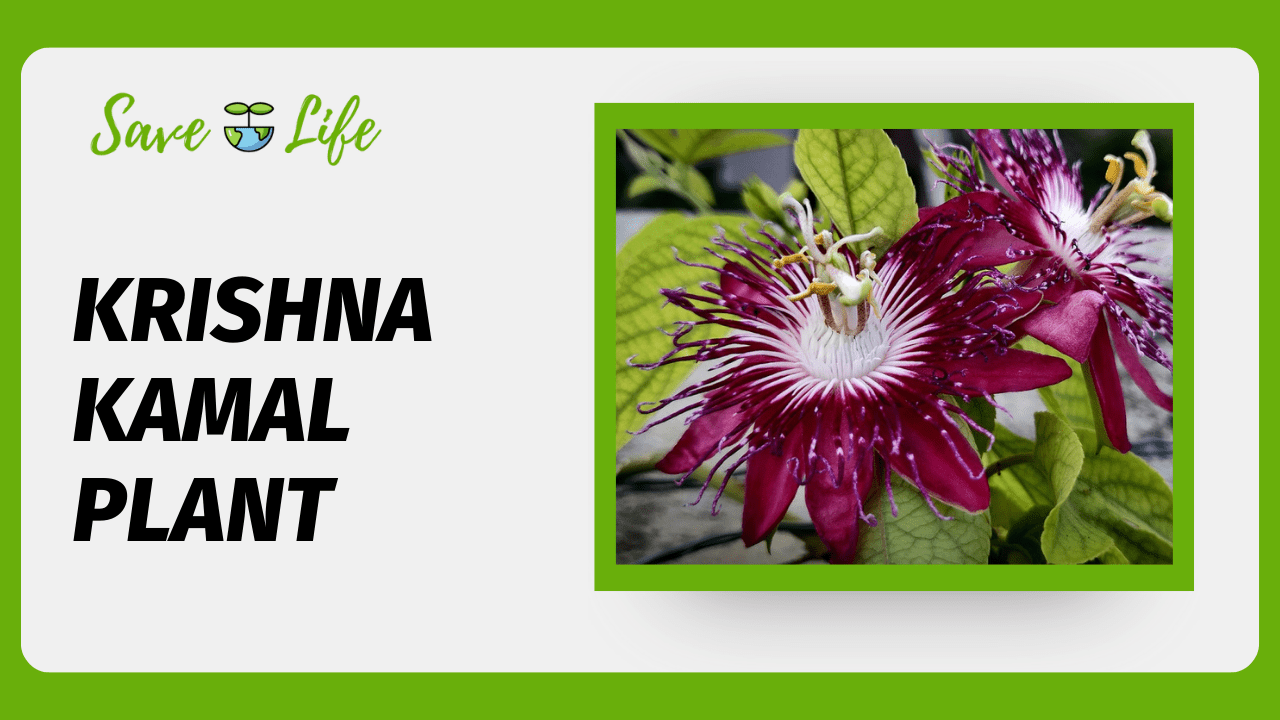Introduction
Yes, you can grow the Krishna Kamal plant in a container as long as it has enough room to expand and grow.
Table of Contents
- The Origins of the Krishna Kamal Plant
- Characteristics of the Krishna Kamal Plant
- Cultivation and Care
- Planting the Krishna Kamal Plant
- Propagation Methods
- Watering and Fertilization
- Symbolism and Cultural Significance
- Health Benefits and Uses
- Popular Varieties of Krishna Kamal
- Mythology and Folklore
- Tips for Enjoying the Krishna Kamal Plant
- Conclusion
- FAQs
The Origins of the Krishna Kamal Plant
The Krishna Kamal plant, often referred to as the “Lotus of the Hindu God Krishna,” holds deep-rooted cultural significance in Indian mythology. It is believed that this magnificent flower originated in the ancient city of Prayag, now known as Allahabad, where Lord Krishna is said to have spent his childhood. The plant thrives in warm and humid climates, primarily in regions with monsoon seasons.
Characteristics of the Krishna Kamal Plant
The Krishna Kamal plant boasts distinct characteristics that make it truly remarkable. It features large, vibrant flowers with petals that range in color from white to pink and deep red. The flowers are accompanied by lily pad-like leaves that float elegantly on the water’s surface, adding an ethereal touch to any pond or water garden. The plant possesses a strong and pleasant fragrance that further enhances its allure.
Cultivation and Care
To cultivate a thriving Krishna Kamal plant, it is essential to provide the ideal growing conditions and proper care. Here are some key considerations:
Choosing the Right Location
Select a location for your Krishna Kamal plant that receives full sunlight for at least six hours a day. Additionally, ensure that the water temperature remains between 75 to 85 degrees Fahrenheit for optimal growth.
Planting the Krishna Kamal Plant
Prepare a suitable container or pond to house the plant. Fill it with a mixture of loamy soil and organic matter.
Also Read: 365 days flowering plants in india
Watering and Fertilization
Maintain an even water level around the Krishna Kamal planst, make sure it is neither too shallow nor too deep and the amount of water around it should be equal and make sure the water is clean, no insects or any Don’t be dirty in any way. Check the water quality and purity regularly to prevent a build-up of seaweed or contaminants. Fertilize the plant using a balanced aqueous fertilizer following the manufacturer’s directions.
Pest and Disease Management
Monitor the plant for any signs of pests or disease, such as aphids or fungal infections. Adopt organic pest control methods or consult a horticulturist for appropriate measures. Clean the water around the Krishna Lotus plant properly daily so that no insects can get to the Krishna Lotus plant. Regularly remove any dead leaves or debris from the surface of the water to prevent decay and maintain cleanliness. These were some kits and disease management, so definitely adopt them for your plants.
Propagation Strategies
The Krishna Kamal plant can be multiplied by sowing seeds or by rhizome division. During the dormant season, carefully divide the rhizomes, making sure that each division includes at least one bud. Gather mature flower seeds for seed propagation, and then plant them in an appropriate growing medium.
Meaning in Culture and Symbolism
Numerous civilizations and faith’s place a great deal of symbolism on the Krishna Kamal plant. The lotus blossom is a symbol of purity, illumination, and the heavenly beauty of the gods in Hindu mythology. It frequently represents Lord Vishnu and Lord Krishna, representing their transcendence and enlightenment on the spiritual plane. The plant has become a representation of love, grace, and devotion thanks to its vivid colors and alluring presence.
Benefits and Uses for Health
Beyond its aesthetic appeal, the Krishna Kamal plant has a variety of useful properties and health advantages. For millennia, people have employed its flowers, leaves, and rhizomes in traditional medicine. The plant is renowned for its antioxidant qualities, which work to fend off free radicals and advance general health. Due to its calming and soothing properties, the rhizome of the Krishna Kamal plant is also a well-liked component in herbal teas and infusions.
Popular Varieties of Krishna Kamal
The Krishna Kamal plant has been grown in a number of attractive variations to suit various tastes. Among the notable ones are:
- Nelumbo nucifera ‘Red Jade’: This cultivar has softly scented, deep red blooms.
- Nelumbo nucifera ‘Snowflake’: This variety gives any water garden a classy touch with its snow-white blossoms.
- Nelumbo nucifera ‘Pink Delight’: This variety radiates grace and beauty with its delicate pink petals.
Folklore and mythology
The Krishna Kamal plant is linked in Hindu mythology to tales of adoration, devotion, and spiritual enlightenment. The lotus flower is thought to have held a special place in the hearts of Lord Krishna and other important Hindu figures. The flower’s fragrant flowers and alluring beauty stand for Lord Krishna’s heavenly presence as well as purity and enlightenment.
Tips for Enjoying the Krishna Kamal Plant
Here are some recommendations for an enjoyable experience so you may truly understand the appeal of the Krishna Kamal plant:
To emphasize the beauty of the plant, create a calm water garden or pond.
Increase the plant’s aesthetic effect at night by adding soft lights to the area around the pond.
A thriving aquatic ecosystem can be produced by combining the Krishna Kamal plant with other aquatic plants, such as water lilies.
conclusion
Krishna Kamal plant is a delectable botanical treasure, which makes one very happy to see, which mesmerizes everyone and makes them feel compelled to grow it in their garden. From its cultural importance to its remarkable beauty, this aquatic perennial adds a touch of charm to any garden or water feature. It adds to the beauty of your home. Flowers pale in comparison to its beauty. By following proper cultivation techniques and embracing the plant’s deep symbolism, you can create a serene sanctuary that reflects the allure of the Krishna lotus plant. Is.
Save Earth Life is all about gardening and planting trees to save nature. Here you can check a variety of topics including Informative facts about plants and trees, Creative gardening ideas How to grow & care plants, Flower Etc.
FAQs
1. Is it possible to cultivate the Krishna Kamal plant in a pot?
Yes, you can grow the Krishna Kamal plant in a container as long as it has enough room to expand and grow.
2. How frequently should I fertilize my Krishna Kamal Plant?
Throughout the growing season, fertilize your Krishna Kamal plant every three to four weeks to encourage strong development and colorful flowers.
3. Is the Krishna Kamal plant appropriate for amateur gardeners?
Yes, beginners may grow the Krishna Kamal plant. It may thrive in a variety of environments with the right care and attention to its changing needs.
4. How much time does the Krishna Kamal plant require to bloom?
Each flower on the Krishna Kamal plant lasts for a few days, and blooming usually occurs from mid-summer to early autumn.
5. Is it possible to grow the Krishna Kamal plant inside?
The Krishna Kamal plant can be cultivated indoors in a sizable container or pond that receives enough sunshine, despite the fact that it prefers outdoor environments.










